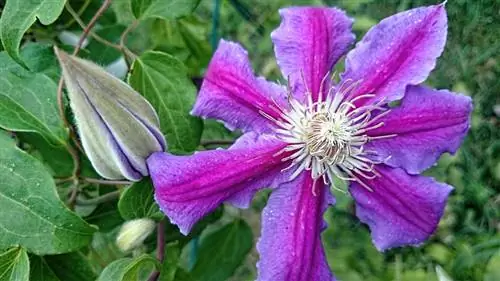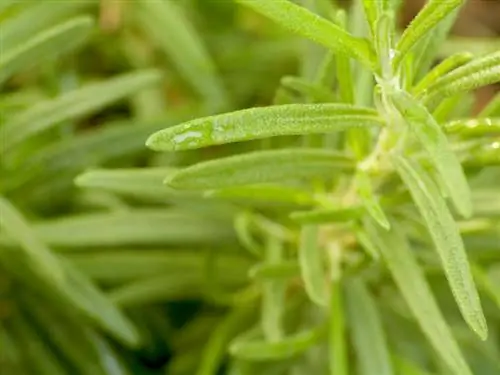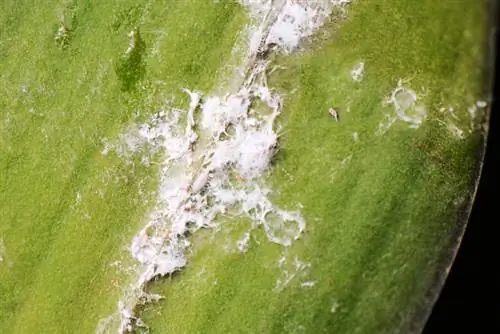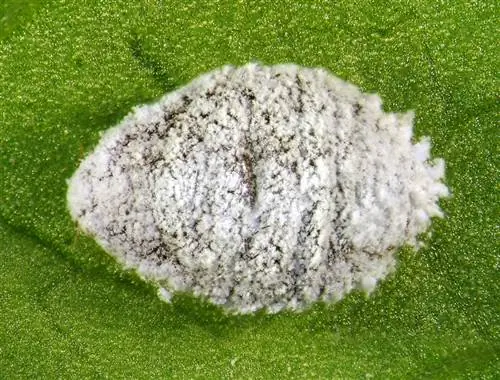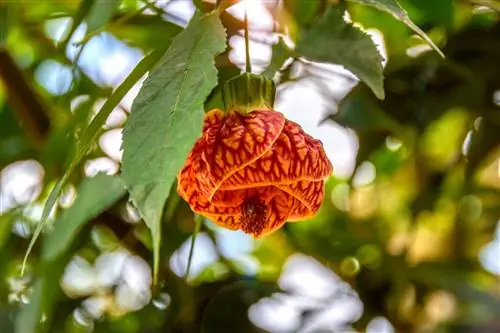- Author admin [email protected].
- Public 2023-12-16 16:46.
- Last modified 2025-06-01 06:02.
They are omnipresent in the garden and do not even spare the clematis. Aphids attack the climbing plant in hordes and suck out its lifeblood. Find out here how to effectively combat pests.
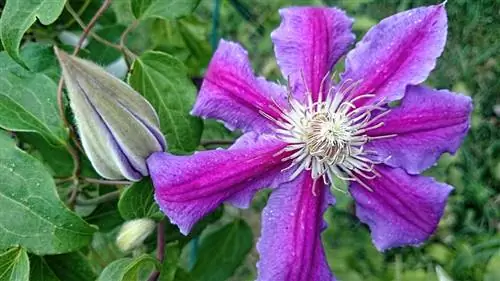
How to fight aphids on a clematis?
To successfully combat aphids on a clematis, you can spray the affected parts of the plant with a strong jet of water or use environmentally friendly home remedies such as soapy water or baking soda mixtures. Repeat the application every 2-3 days so that the lice die off.
Immediate help with clear water - this is how it works
The earlier you diagnose a lice infestation, the more effectively you can combat the pests. Therefore, at the beginning of spring, check the leaves on the top and bottom sides. If the first lice appear here, put an end to the problem with a strong shower. Spray the clematis with as strong a jet of water as possible.
First, the root ball is protected with foil to prevent waterlogging from forming. It is important to note that you do not carry out this measure under direct sunlight. The water drops act like small burning glasses on the leaves.
The best home remedies for lice on clematis
The environmentally conscious hobby gardener is not allowed to use a chemical insecticide to combat aphids. How good that a range of effective home remedies is available. We present tried and tested mixtures to you below:
Soap suds
- 1 liter of water
- 1 tablespoon spirit
- 1 tablespoon of liquid curd soap
Mix these ingredients together, fill the mixture into a spray bottle and apply it to the infected clematis every 2-3 days.
Baking soda/baking soda
- 1 liter of water
- 1 heaped tablespoon of the powder
- 15 ml spirit
- 1 splash of dishwashing liquid
Use this mixture to combat a stubborn aphid colony. Before doing so, we recommend carrying out a test on a hidden area of the infected clematis. Once all concerns have been resolved, apply the product to a large area every 3-5 days until the plague ends.
Since the use of liquid preparations in natural pest control is associated with the risk of a fungal infection, experienced hobby gardeners use this alternative to combat aphids on clematis. Rock dust, pure wood ash or algae lime are applied with a powder syringe every 2-3 days until the pests leave.
Tips & Tricks
Since the clematis likes a shady base, experienced hobby gardeners provide the climbing plant with underplanting. You can kill two birds with one stone if you choose plant species that also have a repellent effect on aphids. These include marigolds, marigolds and non-climbing nasturtiums.

